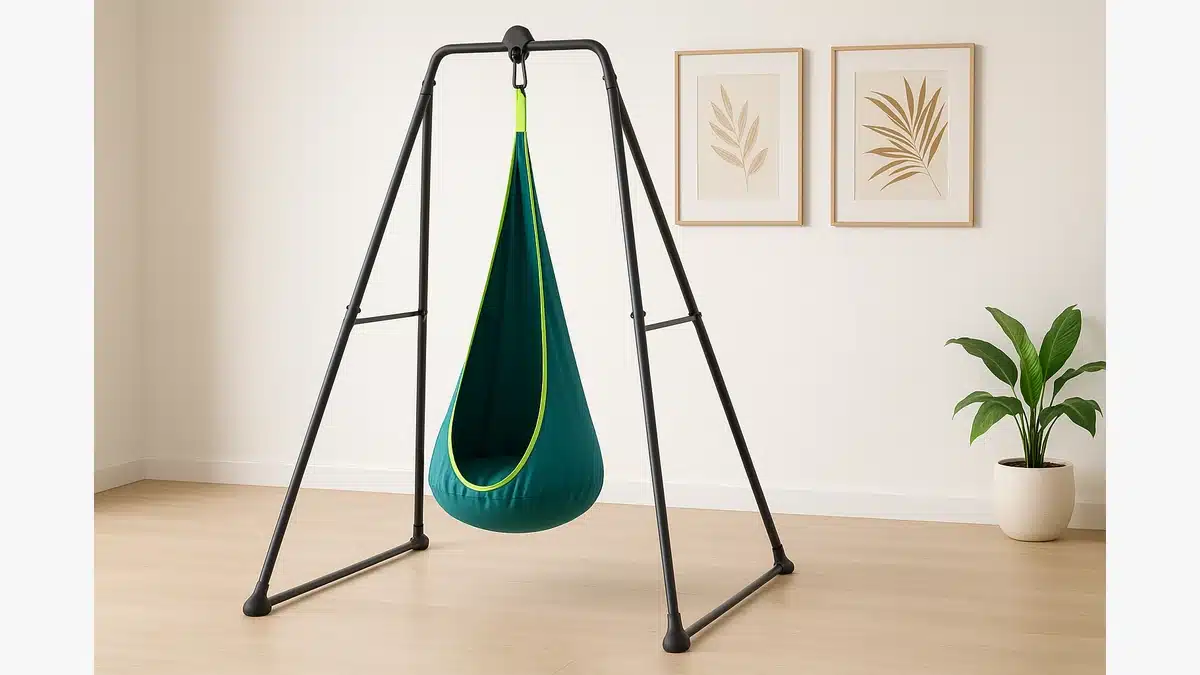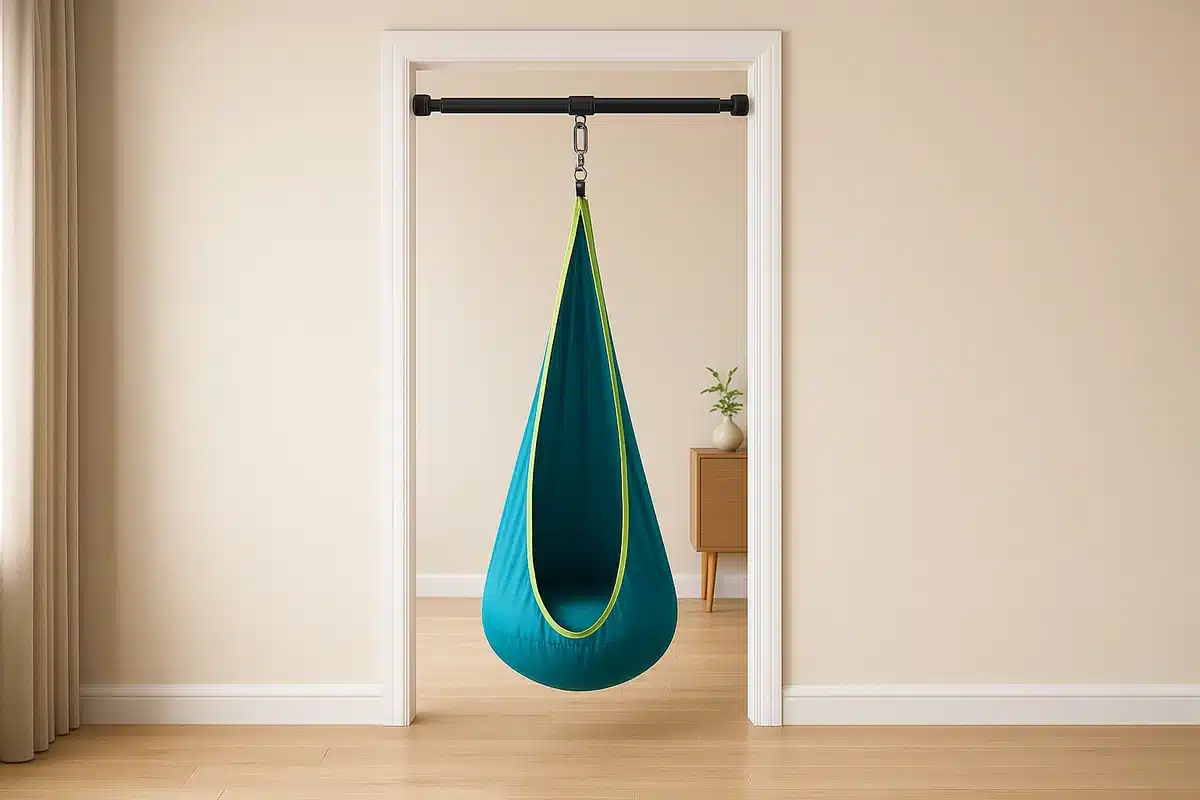No drilling • Renter‑friendly • Portable
No‑Mount Sensory Swings: Frames & Doorway Bars
Want vestibular input without cutting into ceiling joists? This guide covers two proven setups—free‑standing frames and doorway bars—plus a quick comparison and safety notes. We also include a third option: sensory chairs for seated rocking and spinning.
Affiliate disclosure: As an Amazon Associate, we may earn from qualifying purchases.

Free‑Standing Frames
A self‑supporting structure (no ceiling attachment) that holds most single‑point sensory swings. Best for homes and clinics that want full motion without structural work.
Types
- A‑frame: Most common; stable; many fold for storage.
- Tripod: Compact footprint for corners or small rooms.
- H‑base / square base: Minimal walk; heavier and very stable.
Quick specs to check
- Footprint: Safe clearance ~6–8 ft length x 4–6 ft width, 7–8 ft height.
- Capacity: Look for 200–400 lb total (user + swing + dynamic forces).
- Bar style: Single‑point top bar; some accept multi‑point accessories.
- Portability: Folding legs/carry bags help with set‑up/tear‑down.
- Floors: Non‑marring feet; add a mat to protect floors and reduce noise.

Doorway Bars (No-Drill)
Braces across a standard interior door frame and supports a single‑point swing (e.g., hammock or lycra pod). Fast to install and packs away when not in use.
Good to know
- Fit: Commonly fits ~24–36" doorways; check trim depth/clearance.
- Capacity: Many are rated ~200–300 lb total (verify your model).
- Use: Best for gentle, low‑amplitude swinging; keep the doorway closed and clear during use.
- Portability: Quick on/off; great for travel or testing before a permanent setup.
Quick Compare
| Option | Best for | Capacity (typ.) | Space needed | Install |
|---|---|---|---|---|
| Free‑standing frame | Full swing range; stable station | 200–400 lb | Medium–large footprint | Assemble once; movable |
| Doorway bar | Quick setups, renters, travel | ~200–300 lb | Uses doorway width | Tool‑free, removable |
| Sensory chairs | Seated vestibular input | Varies by model | Small–medium footprint | No install |
FAQs
Are frames safer than doorway bars?
Both can be safe when used within manufacturer ratings and instructions. Frames allow a wider swing arc and often higher capacities; doorway bars are best for gentle, low‑amplitude swinging.
Which swings work on these setups?
Most single‑point swings—pod/cocoon and compression—clip easily to a frame or doorway bar. Platform/saucer swings usually need more clearance and are better on frames.
What clearance do I need?
Plan for the swing’s full arc plus 2–3 ft of buffer on all sides. Typical indoor heights are 7–8 ft.
Can I move the setup outdoors?
Yes—choose weather‑tolerant frames and hardware, follow weight ratings, and place on level ground with a safe landing zone.
